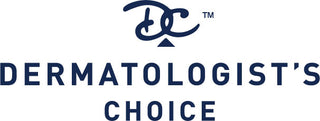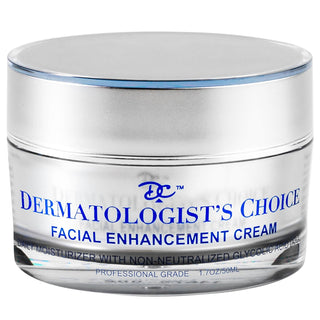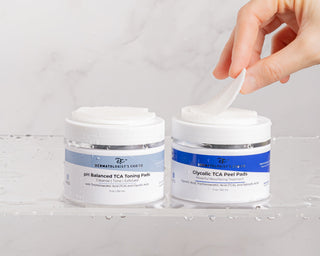Acne is a common skin condition that affects millions of people worldwide. It can be caused by a variety of factors, including genetics, hormones, stress, and lifestyle choices. For years, benzoyl peroxide has been a go-to treatment for reducing acne. However, with the recent FDA recall on several benzoyl peroxide formulations (see the full list here) due to safety concerns, dermatologists, including Dr. Bottiglione, now recommend glycolic acid as the best replacement for achieving clearer skin.
Why is Benzoyl Peroxide Being Phased Out?
Benzoyl peroxide has long been used as an acne treatment due to its ability to kill acne-causing bacteria, reduce inflammation, and unclog pores. However, recent FDA regulations have led to the ban of several benzoyl peroxide formulations due to concerns about high benzene levels. As a result, dermatologists are encouraging patients to explore safer and equally effective alternatives, with glycolic acid emerging as the top choice.
The Best Replacement: Glycolic Acid for Acne Reduction
Dr. Bottiglione, a board-certified dermatologist with decades of experience, strongly recommends glycolic acid as the best alternative to benzoyl peroxide for acne treatment. Unlike benzoyl peroxide, glycolic acid is a gentler yet powerful exfoliating ingredient that helps clear acne and improve skin texture without excessive irritation.
How Glycolic Acid Works for Acne
-
Exfoliates and Unclogs Pores
- Glycolic acid is an alpha hydroxy acid (AHA) that works by exfoliating the skin’s surface, removing dead skin cells, and preventing clogged pores, a leading cause of breakouts.
-
Reduces Acne-Causing Bacteria
- Unlike benzoyl peroxide, which directly kills acne-causing bacteria, glycolic acid creates an environment where bacteria cannot thrive by keeping the skin clear and balanced.
-
Minimizes Inflammation and Redness
- One of the biggest drawbacks of benzoyl peroxide is its potential to cause excessive dryness and irritation. Glycolic acid, on the other hand, helps reduce inflammation and redness while promoting skin healing.
-
Improves Skin Texture and Reduces Acne Scars
- Regular use of glycolic acid can fade post-acne marks, smooth skin texture, and brighten the complexion, offering long-term benefits beyond just acne reduction.
How to Use Glycolic Acid for Acne Treatment
For best results, Dr. Bottiglione recommends incorporating glycolic acid into your skincare routine as follows:
- Cleanser: Start with a glycolic acid-based cleanser, such as the Dermatologist’s Choice pH Balanced Cleanser, to gently exfoliate and clear pores.
- Tone: Ensure the best cleanse by applying a toner like the pH Balanced TCA Toning Pads by Dermatologist's Choice.
- Treatment: Apply a glycolic acid serum or cream, like the Dermatologist’s Choice Facial Enhancement Cream, which contains non-neutralized glycolic acid to provide maximum acne-fighting benefits.
- Moisturizer: Follow with a lightweight, non-comedogenic moisturizer to keep the skin hydrated and prevent irritation.
- Sunscreen: Always wear SPF during the day, as glycolic acid can increase sun sensitivity.
With the FDA’s recent crackdown on benzoyl peroxide products, it’s time to shift to a safer, more effective solution. Glycolic acid, as recommended by Dr. Bottiglione, is the best alternative for reducing acne, improving skin texture, and preventing future breakouts. If you’re looking for an effective replacement for benzoyl peroxide, glycolic acid is your answer.
Make the switch today and experience clearer, healthier skin with dermatologist-approved glycolic acid formulations. Start with the Dermatologist recommended Acne Starter Set.
MEET THE EXPERT

Disclaimer: The skincare articles on Dermatologist’s Choice are intended for educational purposes, providing insights into specific ingredients and skincare topics. Our content is designed to be informative, not to serve as medical advice. Any mention of patient experiences is purely for informational purposes and should not be interpreted as a treatment recommendation. Additionally, any Dermatologist’s Choice products referenced in these articles are formulated for cosmetic use only and are not intended to replace professional medical advice or pharmaceutical treatments. Always consult a physician for personalized skincare recommendations.
















